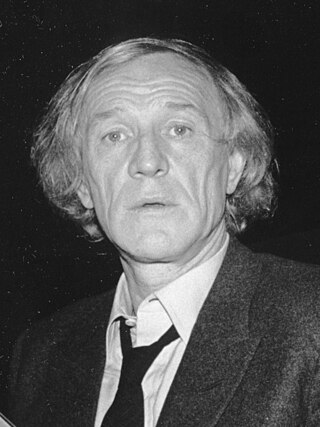
Richard St John Francis Harris was an Irish actor and singer. Having studied at the London Academy of Music and Dramatic Art, he rose to prominence as an icon of the British New Wave. He received numerous accolades including the Cannes Film Festival Award for Best Actor, and a Grammy Award. In 2020, he was listed at number 3 on The Irish Times's list of Ireland's greatest film actors.

Alberto Díaz Gutiérrez, better known as Alberto Korda or simply Korda, was a Cuban photographer, remembered for his famous image Guerrillero Heroico of Argentine Marxist revolutionary Che Guevara.

Horslips are an Irish Celtic rock band that compose, arrange and perform songs frequently inspired by traditional Irish airs, jigs and reels. The group are regarded as "founding fathers of Celtic rock" for their fusion of traditional Irish music with rock music and went on to inspire many local and international acts. They formed in 1970 and 'retired' in 1980 for an extended period. The name originated from a spoonerism on The Four Horsemen of the Apocalypse which became "The Four Poxmen of The Horslypse".

Alberto Granado Jiménez was an Argentine–Cuban biochemist, doctor, writer, and scientist. He was also the youthful friend and traveling companion of Che Guevara during their 1952 motorcycle tour in Latin America. Granado later founded the University of Santiago de Cuba School of Medicine. He authored the memoir Traveling with Che Guevara: The Making of a Revolutionary, which served as a reference for the 2004 film The Motorcycle Diaries, in which he was played by Rodrigo de la Serna. An elderly Alberto Granado makes a short appearance at the end of the film.
Arthur Quinlan was an Irish raconteur and print journalist with The Irish Times. Known for his interviews with politicians, royalty and film stars in a career spanning more than 50 years, he was widely regarded as a very important figure in his field, and was both the first Irishman to get a jet across the Atlantic Ocean to New York in 1958 and the only western journalist to have interviewed Che Guevara. Considered a "master of executing international scoops", his work was sent across the world.
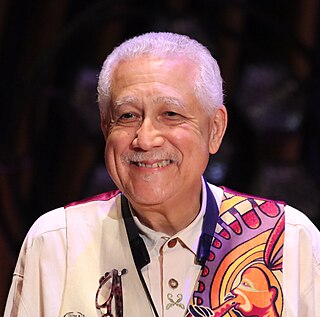
Francisco de Jesús Rivera Figueras, known as Paquito D'Rivera, is a Cuban-American alto saxophonist, clarinetist and composer. He was a member of the Cuban songo band Irakere and, since the 1980s, he has established himself as a bandleader in the United States. His smooth saxophone tone and his frequent combination of Latin jazz and classical music have become his trademarks.
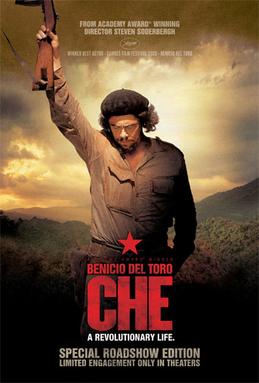
Che is a two-part 2008 biographical film about Argentine Marxist revolutionary Ernesto "Che" Guevara, directed by Steven Soderbergh. Rather than follow a standard chronological order, the films offer an oblique series of interspersed moments along the overall timeline. Part One is titled The Argentine and focuses on the Cuban Revolution from the landing of Fidel Castro, Guevara, and other revolutionaries in Cuba to their successful toppling of Fulgencio Batista's dictatorship two years later. Part Two is titled Guerrilla and focuses on Guevara's attempt to bring revolution to Bolivia and his demise. Both parts are shot in a cinéma vérité style, but each has different approaches to linear narrative, camerawork and the visual look. It stars Benicio del Toro as Guevara, with an ensemble cast that includes Demián Bichir, Rodrigo Santoro, Santiago Cabrera, Franka Potente, Julia Ormond, Vladimir Cruz, Marc-André Grondin, Lou Diamond Phillips, Joaquim de Almeida, Édgar Ramírez, Yul Vazquez, Unax Ugalde, Alfredo De Quesada, and Oscar Isaac.
Felix René Mederos Pazos was a prominent Cuban poster artist and graphic designer.

Aleida Guevara March is a Cuban physician who is the eldest of four children born to Ernesto "Che" Guevara and his second wife, Aleida March.
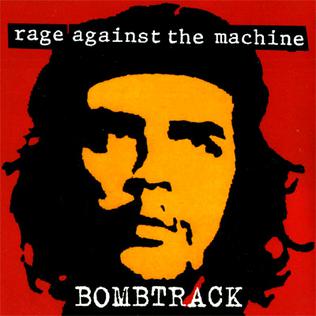
"Bombtrack" is a song by American rock band Rage Against the Machine. It is the opening track on their self-titled debut album.
Appearances of Argentine Marxist revolutionary Che Guevara (1928–1967) in popular culture are common throughout the world. Although during his lifetime he was a highly politicized and controversial figure, in death his stylized image has been transformed into a worldwide emblem for an array of causes, representing a complex mesh of sometimes conflicting narratives. Che Guevara's image is viewed as everything from an inspirational icon of revolution, to a retro and vintage logo. Most commonly he is represented by a facial caricature originally by Irish artist Jim Fitzpatrick and based on Alberto Korda's famous 1960 photograph titled Guerrillero Heroico. The evocative simulacra abbreviation of the photographic portrait allowed for easy reproduction and instant recognizability across various uses. For many around the world, Che has become a generic symbol of the underdog, the idealist, the iconoclast, or the martyr. He has become, as author Michael Casey notes in Che's Afterlife: The Legacy of an Image, "the quintessential postmodern icon signifying anything to anyone and everything to everyone."

Ernesto "Che" Guevara was an Argentine Marxist revolutionary, physician, author, guerrilla leader, diplomat, and military theorist. A major figure of the Cuban Revolution, his stylized visage has become a ubiquitous countercultural symbol of rebellion and global insignia in popular culture.
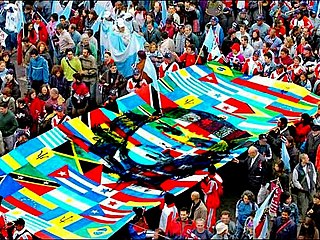
The legacy of Argentine Marxist revolutionary Che Guevara is constantly evolving in the collective imagination. As a symbol of counterculture worldwide, Guevara is one of the most recognizable and influential revolutionary figures of the twentieth century. However, during his life, and even more since his death, Che has elicited controversy and wildly divergent opinions on his personal character and actions. He has been both revered and reviled, being characterized as everything from a heroic defender of the poor, to a cold-hearted executioner.
Ernesto "Che" Guevara, was an Argentine Marxist revolutionary, politician, author, intellectual, physician, military theorist, and guerrilla leader. His life, legacy, and ideas have attracted a great deal of interest from historians, artists, film makers, musicians, and biographers. In reference to the abundance of material, Nobel Prize–winning author Gabriel García Márquez has declared that "it would take a thousand years and a million pages to write Che's biography."

Che Jesus is an image depicting Jesus Christ in the style of Jim Fitzpatrick's iconic two-tone portrait of Che Guevara, which is itself based upon Alberto Korda's iconic Guerrillero Heroico photo.
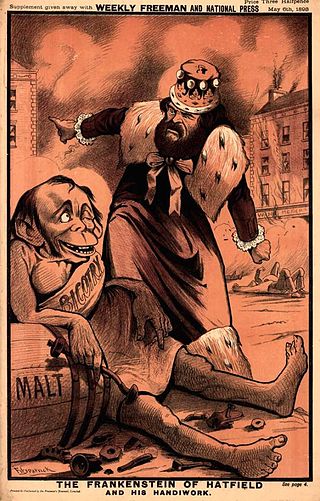
Thomas Fitzpatrick, pen name Fitz, was an Irish political cartoonist.
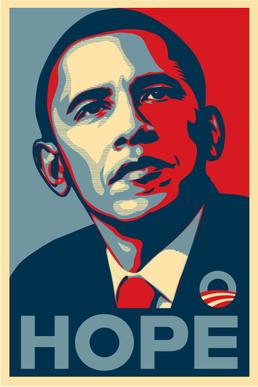
The Barack Obama "Hope" poster is an image of US president Barack Obama designed by American artist Shepard Fairey. The image was widely described as iconic and came to represent Obama's 2008 presidential campaign. It is a stylized stencil portrait of Obama in solid red, beige and blue, with the word "progress", "hope", or "change" below.

Guerrillero Heroico is an iconic photograph of Marxist revolutionary Che Guevara taken by Alberto Korda. It was captured on March 5, 1960, in Havana, Cuba, at a memorial service for victims of the La Coubre explosion. By the end of the 1960s, the image, in conjunction with Guevara's subsequent actions and eventual execution, helped solidify the leader as a cultural icon. Korda has said that at the moment he shot the picture, he was drawn to Guevara's facial expression, which showed "absolute implacability" as well as anger and pain. Years later, Korda would say that the photograph showed Che's firm and stoic character. Guevara was 31 years old at the time the photograph was taken.

The Che Guevara trend, or "Che chic", is a fashion trend featuring the Argentine-born revolutionary Ernesto "Che" Guevara. The phenomenon has attracted attention from the media, political commentators, songwriters, and Cuban American activists due to the popularity of the T-shirt design, Che's political beliefs, and the "irony" of buying a T-shirt depicting a Marxist icon. As op-ed commentator Chris Berg noted in The Age, "Ironically, Che Guevara's longevity as a cultural symbol has been thanks to the very economic system he sought to destroy".
Chevolution is a 2008 documentary film which examines the history and legacy of the photo Guerrillero Heroico taken by famous Cuban photographer Alberto Díaz Gutiérrez. This image has thrived for the decades since Che Guevara's death and has evolved into an iconic image, which represents a multitude of ideals. The documentary explores the story of how the photo came to be, its adoption of multiple interpretations and meanings, as well as the commercialization of the image of Ernesto "Che" Guevara.
















